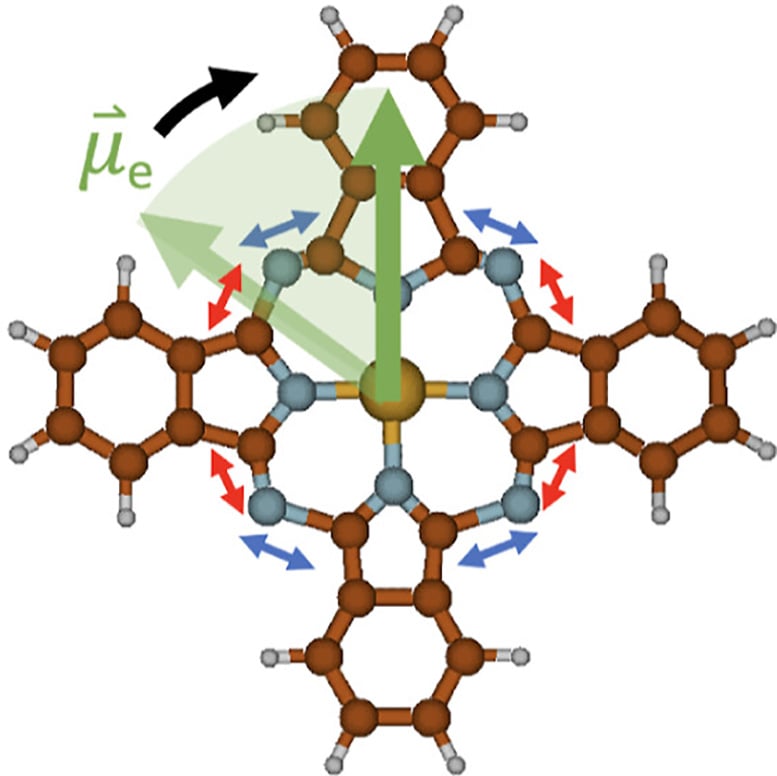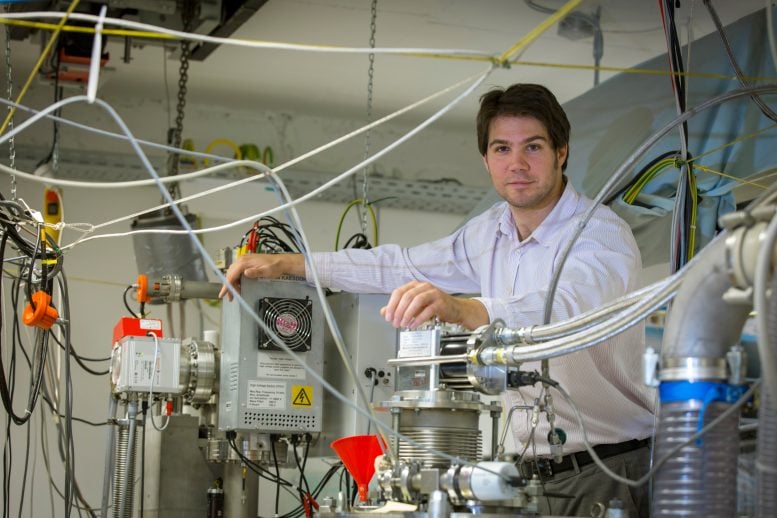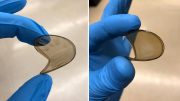
When irradiated with infrared light, certain molecules like metal phthalocyanines vibrate and generate tiny, localized magnetic fields. Researchers have calculated these effects and aim to experimentally prove and manipulate these fields for potential applications in quantum computing. Credit: SciTechDaily.com
Physicists at TU Graz have determined that certain molecules can be stimulated by pulses of infrared light to generate small magnetic fields. If experimental trials are also successful, this technique could potentially be applied in quantum computer circuits.
When molecules absorb infrared light, they start to vibrate as they receive energy. Andreas Hauser from the Institute of Experimental Physics at Graz University of Technology (TU Graz) used this well-understood process as a basis for exploring whether these vibrations could be harnessed to produce magnetic fields. Since atomic nuclei carry a positive charge, the movement of these charged particles results in the creation of a magnetic field.
Using the example of metal phthalocyanines – ring-shaped, planar dye molecules – Andreas Hauser and his team have now calculated that, due to their high symmetry, these molecules actually generate tiny magnetic fields in the nanometre range when infrared pulses act on them.
According to the calculations, it should be possible to measure the rather low but very precisely localized field strength using nuclear magnetic resonance spectroscopy. The researchers have published their results in the Journal of the American Chemical Society.
Circular Dance of the Molecules
For the calculations, the team drew on preliminary work from the early days of laser spectroscopy, some of which were decades old. They also used modern electron structure theory on supercomputers at the Vienna Scientific Cluster and TU Graz to calculate how phthalocyanine molecules behave when irradiated with circularly polarized infrared light. What happened was that the circularly polarized, i.e. helically twisted, light waves excite two molecular vibrations at the same time at right angles to each other.
“As every rumba dancing couple knows, the right combination of forwards-backwards and left-right creates a small, closed loop. And this circular movement of each affected atomic nucleus actually creates a magnetic field, but only very locally, with dimensions in the range of a few nanometres,” says Andreas Hauser.
Molecules As Circuits in Quantum Computers
By selectively manipulating the infrared light, it is even possible to control the strength and direction of the magnetic field, explains Andreas Hauser. This would turn the molecules into high-precision optical switches, which could perhaps also be used to build circuits for a quantum computer.

Schematic representation of a metal phthalocyanine molecule that is set into two vibrations (red and blue), creating a rotating electric dipole moment (green) in the molecular plane and thus a magnetic field. Credit: Wilhelmer/Diez/Krondorfer/Hauser – TU Graz
Experiments As the Next Step
Together with colleagues from the Institute of Solid State Physics at TU Graz and a team at the University of Graz, Andreas Hauser now wants to prove experimentally that molecular magnetic fields can be generated in a controlled manner.
“For proof, but also for future applications, the phthalocyanine molecule needs to be placed on a surface. However, this changes the physical conditions, which in turn influences the light-induced excitation and the characteristics of the magnetic field,” explains Andreas Hauser. “We therefore want to find a support material that has minimal impact on the desired mechanism.”
In the next step, the physicist and his colleagues want to compute the interactions between the deposited phthalocyanines, the support material, and the infrared light before putting the most promising variants to the test in experiments.
Reference: “Molecular Pseudorotation in Phthalocyanines as a Tool for Magnetic Field Control at the Nanoscale” by Raphael Wilhelmer, Matthias Diez, Johannes K. Krondorfer and Andreas W. Hauser, 14 May 2024, Journal of the American Chemical Society.
DOI: 10.1021/jacs.4c01915
The study was funded by the Austrian Science Fund.










Although scientific research is like discerning paths and directions in a dark wilderness, mathematics has always been a beacon that guides human science towards the right path and direction.
If researchers are willing to further consider, you can browse https://zhuanlan.zhihu.com/p/697274113 and https://zhuanlan.zhihu.com/p/693933588.
Scientific research guided by correct theories can help humanity avoid detours and failures.
Quantum computing is just like cold fusion – always just ten years away from feasibility.